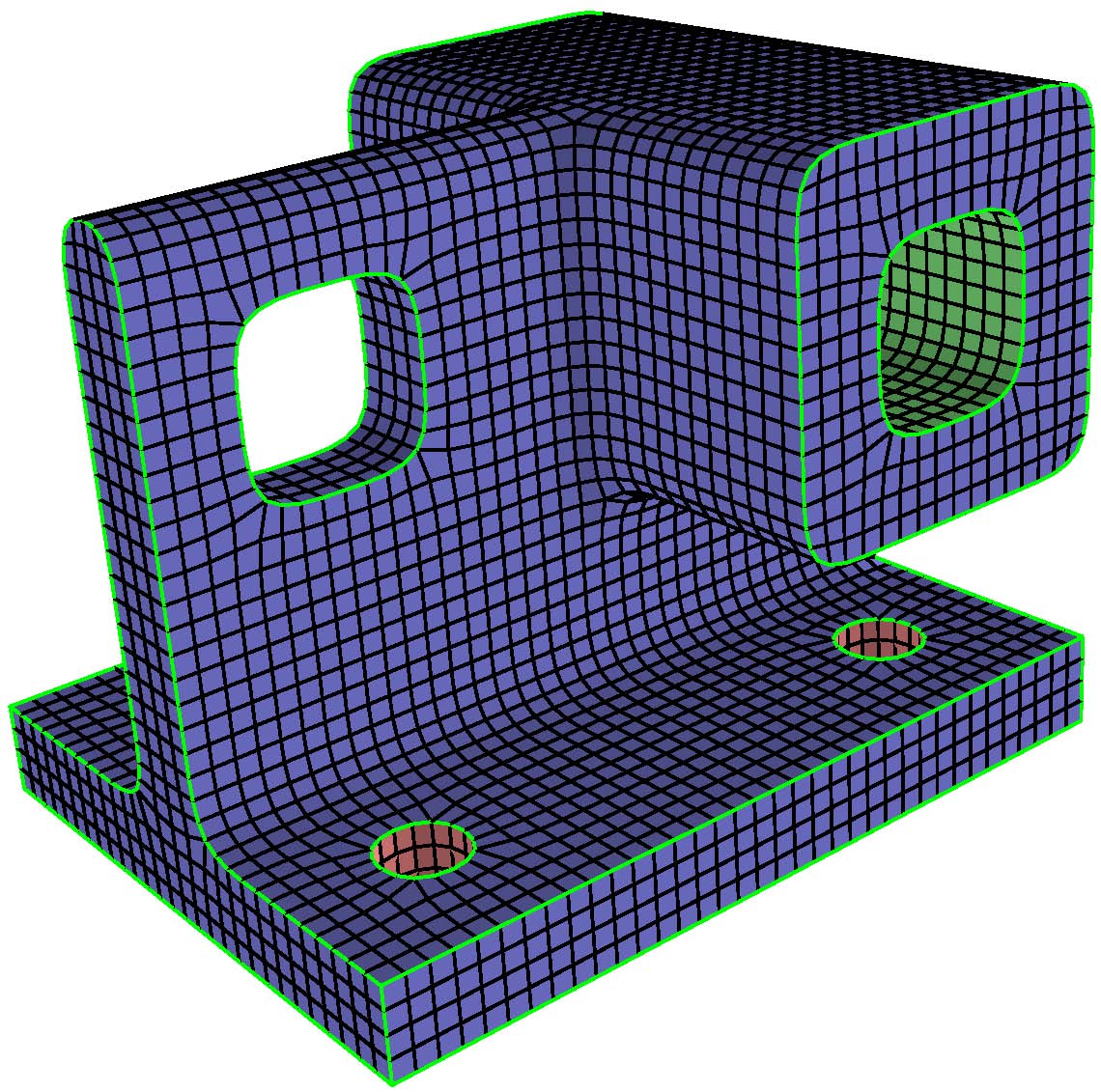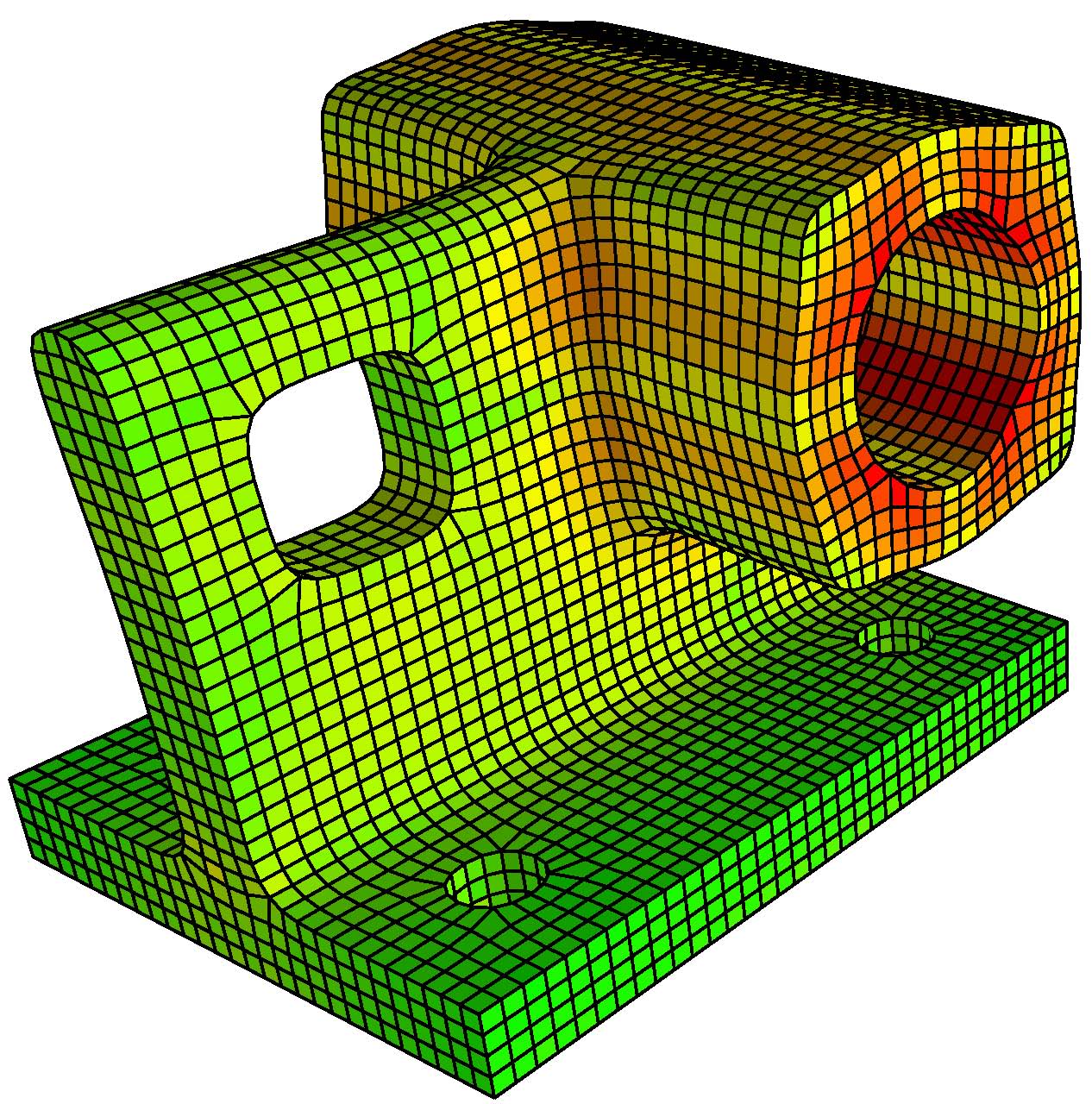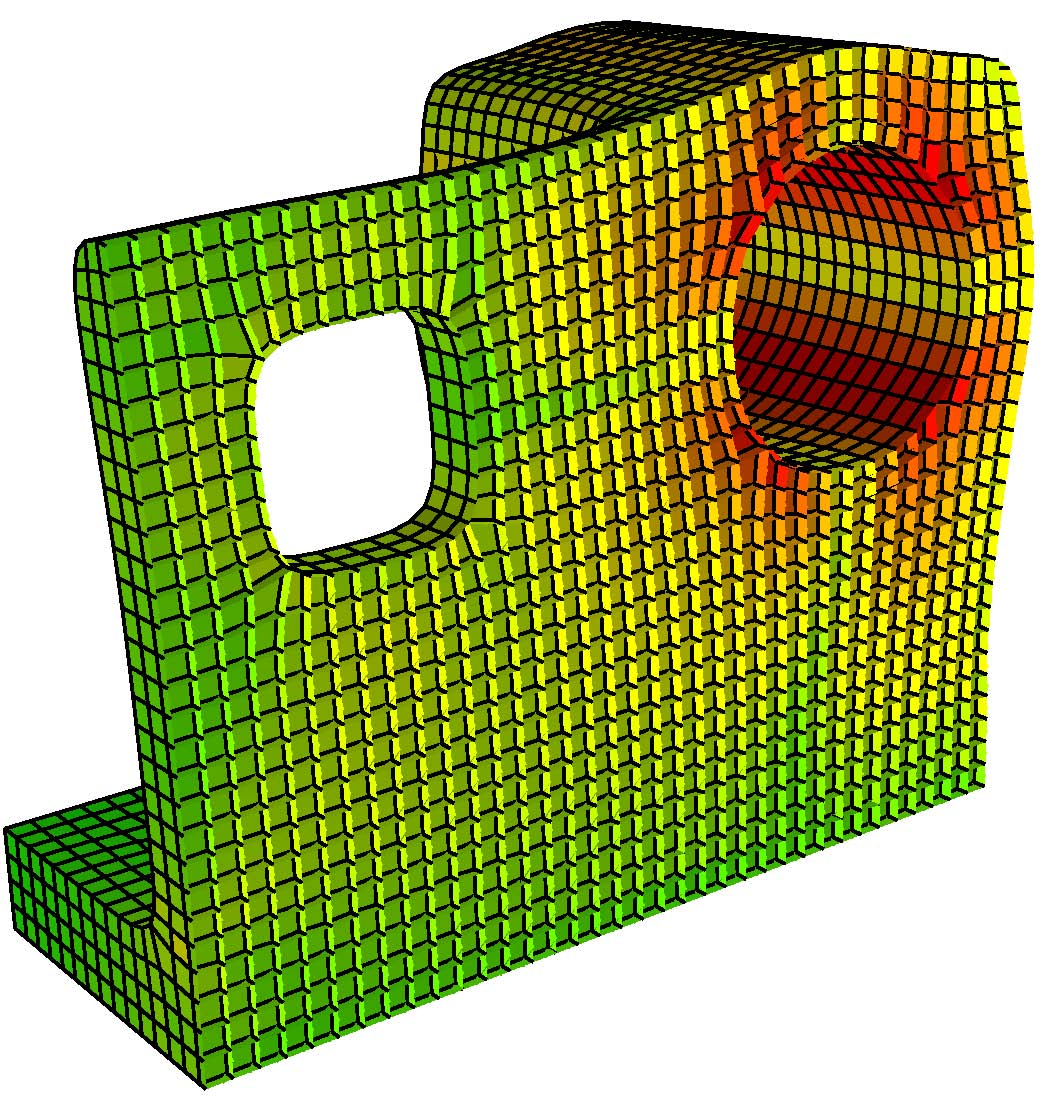Solid subdivision algorithms
For surfaces subdivision algorithms are a well established tool for modeling and manipulation. For solid models subdivision techniques are a new research direction. Using subdivision schemes to model and manipulate solid models offers the versatility and flexibility of the subdivision approach. On the other hand the combinatorial complexity of the algorithms and models increases, which makes simulations for solid models computationally expensive.
The major focus in this research project is on efficient data representations and subdivision algorithms that allow to use the subdivision functions for the modeling as well as the simulation. Such an iso-geometric approach is particularly important for solid models, where the complexity is by nature much higher. To this end the subdivision rules need to be tailored for the physical process to be simulated, the simulation process, as well as the representation of the geometric model. So varioussolid subdivision schemes for tetrahedra or hexahedra with efficient integration strategies are developed.
An example result is shown in the figure below. The shown mechanical part (left) is modeled with a Catmull-Clark algorithm for solid models and the simulations is computed based on Catmull-Clark elements. Here a radial force is applied to the cylindrical hole (left, green faces) while the model is fixed at the four drill holes at the bottom (left, red faces). The color in the middle and right figures visualizes the deformation stress (green = low stress, red = high stress). The right figure shows a cutaway view to the inside of the model. The advantages of this iso-geometric approach are a faster convergence and that conversions between the representations for the modeling and the simulation are obsolete.



Catmull-Clark solid (left) with stress visualization (middle and right) for a rotational force applied the cylindrical hole. See [BHU10a].
Publications in this project can be found here: [BHU11], [BHU10a], [BHU10b], [BHU10c], [LHU10].
